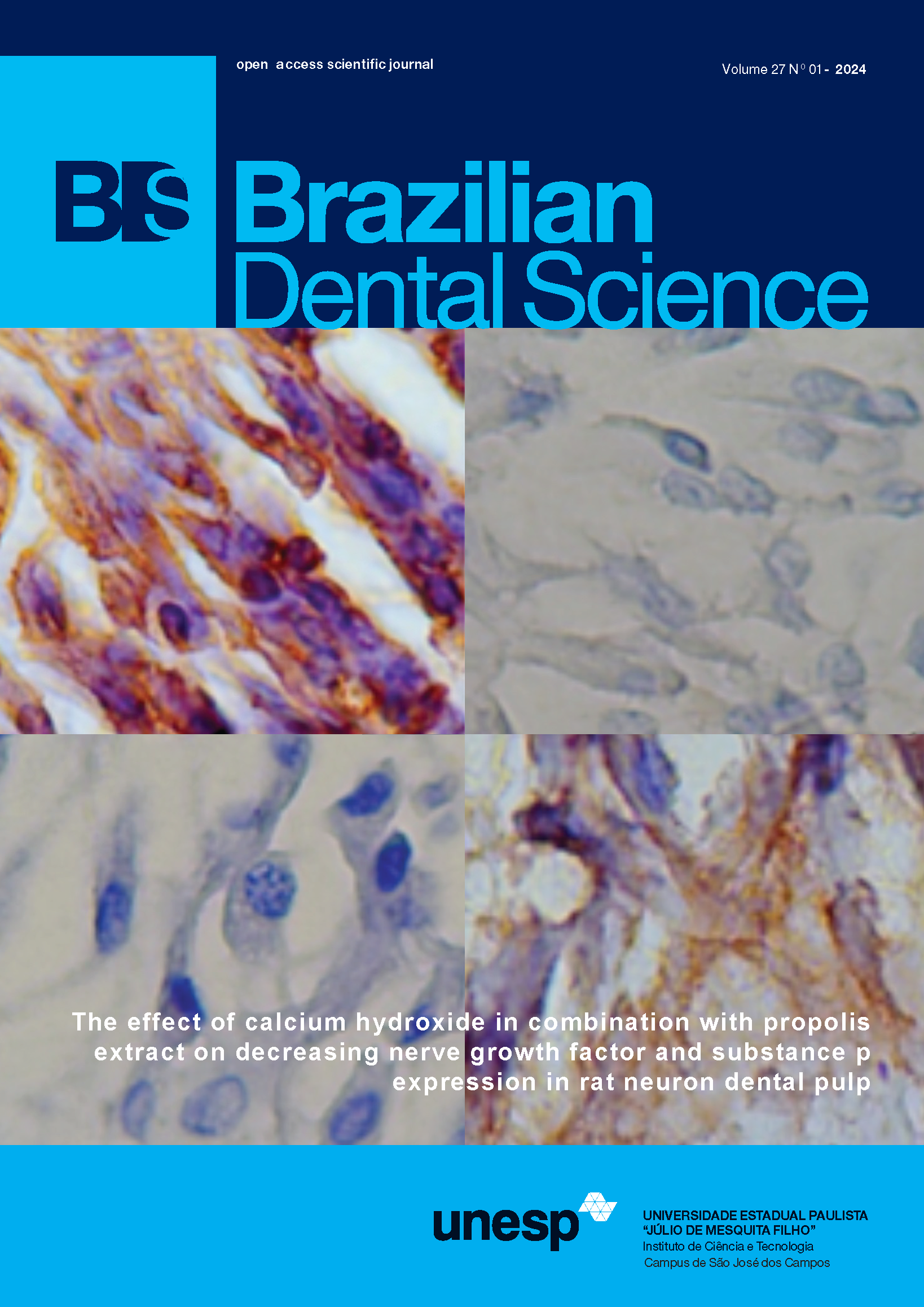Can Scanning Electron Microscopy be used to quantitatively measure dentine roughness?
DOI:
https://doi.org/10.4322/bds.2024.e4015Resumo
Objective: The aim of this study was to determine if SEM used with imaging software could be used to quantitatively determine the extent of dentine roughness due to tooth-brushing. Material and methods: Flat, polished dentine surfaces were subjected to 25,000 cycles of simulated tooth-brushing at 2 strokes per second with a load of 200 g. At the end of the brushing cycle, dentine surfaces were first assessed using profilometry and then subjected to SEM analysis. Ra (average roughness) readings were obtained for profilometric assessment. Using imaging software, the horizontal distance between adjacent characteristic grooves noted on micrographs was measured, ensuring that the middle of each crest of the associated groove was used as the reference point, the Crest-to-Crest distance (C-C distance). These two parameters were examined statistically for correlation. Results: When Spearman Rank tests were utilized the correlation between average Ra and crest to crest measurements was 0.709 (p <0.01). The Bland Altman plot, however, showed poor agreement between the two test parameters. Conclusion: Further work is needed to validate the use of this methodology in the quantitative assessment of tooth surface loss due to abrasion.
KEYWORDS
Abrasion; Bland-Altman; Dentine roughness; Profilometry; Scanning electron microscopy.
Downloads
Downloads
Publicado
Como Citar
Edição
Seção
Licença
TRANSFERÊNCIA DE DIREITOS AUTORAIS E DECLARAÇÃO DE RESPONSABILIDADE
Toda a propriedade de direitos autorais do artigo "____________________________________________________________________" é transferido do autor(es) para a CIÊNCIA ODONTOLÓGICA BRASILEIRA, no caso do trabalho ser publicado. O artigo não foi publicado em outro lugar e não foi submetido simultaneamente para publicação em outra revista.
Vimos por meio deste, atestar que trabalho é original e não apresenta dados manipulados, fraude ou plágio. Fizemos contribuição científica significativa para o estudo e estamos cientes dos dados apresentados e de acordo com a versão final do artigo. Assumimos total responsabilidade pelos aspectos éticos do estudo.
Este texto deve ser impresso e assinado por todos os autores. A versão digitalizada deverá ser apresentada como arquivo suplementar durante o processo de submissão.




























